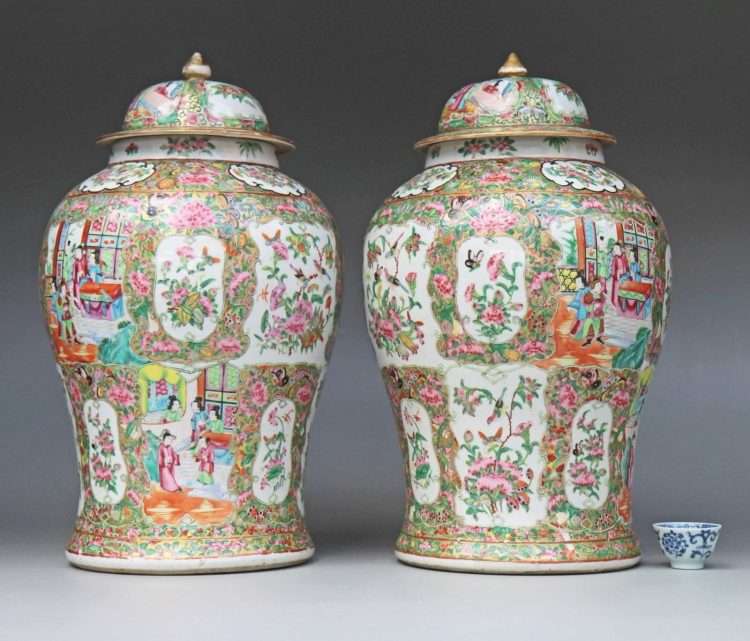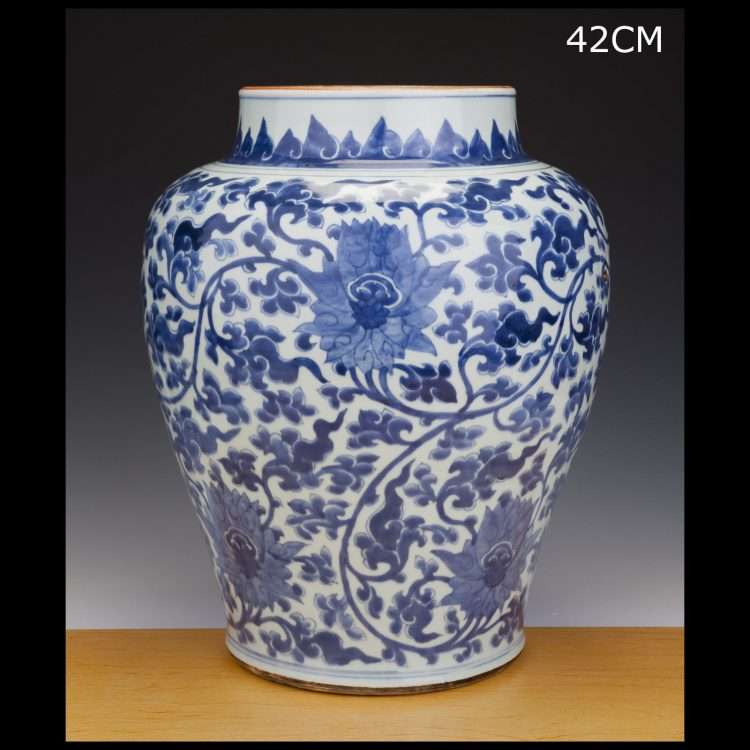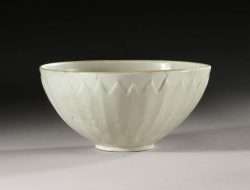A Few Things That Have Sold In the Last Year Within Nearly Any Collectors Budget
Buyable Chinese Art in 2019, All for $400 to $6,500
Is It Too Late To Start Collecting Chinese Art? Porcelain, Jade and Bronze? In a word, "NO, not at all."
A Few Thoughts
Collecting Chinese Antiques in 2019, a few thoughts as we head into the new year. I often hear from folks wanting to get into collecting Chinese antiques "is it too late, haven't prices gone too high and haven't all the best pieces gone back to China?" My answer today is the same as it was ten years ago and 20 years ago, "NO."
Collecting today is not the same as it was in the 1970's, but then again it's not the same as it was in 1910 either. All art markets mature structurally with regards to pricing, it also tends to happen in waves. It can go up and go down. Whats hot today, may be totally sidelined in the future and it may last for decades. One only need look at what happened to the Japanese antique market since the 1990's it more or less collapsed, just as did the American antique furniture market.
In a nutshell, there is still a lot of great Chinese material on the market at all price levels, great bargains can be found and collecting is just as much fun today, as it was decades ago.
So don't be discouraged if you haven't found that "Ru-Ware" vase or Chenghua "Mallow Bowl" at a local yard sale or corner antique shop, historically those finds were never common. That's not to say fine and rare things have never been found in these types of places. They have and still do for the lucky few with about the same frequency as 50 years ago.
Fabulously great things are still floating around in the west, they do on occasion get into the market at bargain basement prices. That's not to say these pieces have never been recognized as great rarities before their most recent re-emergence from the shadows of someone's closet or attic box.
A couple years ago (2013) a Song Ding Bowl bought at a yard sale for $3.00 sold for 2.2 Million. So it "can" happen, bear in mind the owner had no idea what he had bought in 2008.
The Truth About Rarities
The reality is, most of the really rare things you see at auction have, or had, fairly well established "collection histories" if not documented in writing they often were recognized "By Tradition" via their owners. Very few great and rare objects in private hands from China were not at one point or another recognized for their merit. That knowledge may have been lost over time, however, so keep your eyes open. As objects get passed down, receipts and records often get lost that would if preserved prevent them being sold to a local junk shop or in a yard sale.
On occasion, a careless heir or executor sell things "as is" to the first person they found in the Yellow Pages under "Antique Dealers." In the art world, the greatest example of this was the recently "rediscovered" painting by Leonardo Davinci which sold for $54 during the 1950's. It just sold for almost half a billion dollars, so remember to hang onto your paperwork!
A Few Myths About Collecting Chinese Antiques in 2019
All the best pieces have gotten prohibitively expensive for the average collector.
Fine and rare Chinese porcelains have always been expensive and highly sought by collectors for centuries, so have fine jades, bronzes and paintings. If you look back to the auction prices realized from the 1960's to the 1980's (bear in mind that's 50 to 30 years ago) a great mark and period Qianlong blue and white vase back then was well beyond the budget of the average collector.
Think about how much $10,000 was in the 60's. about twice the price of a new top end Mercedes Benz, a year at Harvard University in 1965 was $3,100, today its over $63,000. Its all relative, many Chinese pieces sold in that range back then and for a lot more.
There are no good buys anymore.
Actually, there are many good buys to be had with a little focus and careful planning. On occasion you might find real Imperial pieces, they've always been expensive but are still around if you know enough to spot real examples. Very fine 17th, 18th and 19th C. objects in all categories can be acquired well within the budgets of most collectors.
Today you can easily buy a superb top quality Qianlong export plate or cup and saucer set for under $600. You can buy a terrific 18th C. 15 inch charger for under $1,200 most of the time. These are often about the same or less than they were 15 years ago. Without much trouble at all, you can find and buy a Song bronze vase for under $1,400 or a Ming Figural bronze with a good patina for less than $700. This past weekend a great early 19th C. Chinese painting depicting a workshop selling ceramics went through eBay all framed and ready to hang for $456.00. (See photo)
Really good pieces do not turn up that often anymore.
I disagree totally with this idea, every week we find terrific fine quality objects that are not only early, but are also affordable for most collectors.
Great museum quality pieces have never been plentiful, well not since perhaps the Great Depression when collections were dispersed due to economics. So collecting Chinese antiques in 2019 won't be like the 1930's, but then we aren't a nation on bread lines either.
Here in New England, during the 70's and 80's you either saw real things or you saw nothing, fakes were not much of an issue. In a good year, a very active higher end dealer or auctioneer might see 7 to 10 good mark and period pieces outside of what was being sold at Christie's or Sotheby-Park-Bernet (now known as just Sotheby's) Not great, just good.
Today, you still can encounter the occasional mark and period piece outside of the major auction houses and can still find some outstanding other examples. Sure the prices are higher than back then, but everything costs more as well. The difficulty today for many is being able to separate copies from authentic pieces.
Bear in mind China Trade porcelain and objects of the 18th and 19th C. have declined in the last 10 years along with demand. However, perfectly good Ming pieces can be bought in the mid 100's to $4,000 range which is all proportional to values years ago.
Every year good pieces still turn up, often in unexpected places or through local dealers. Get to know local dealers, tell them what you're looking for.
A lot more collectors have entered the market, so it's harder to find things.
First, many of the collectors in the market today are not actually collectors, they are investors - speculators. Most of the ones I've encountered know very little and pose no serious competition to true collectors or experienced dealers. Many have lost their shirts buying fakes at auctions thinking they got very lucky, so ignore them.
Lots of other "armchair" buyers have also jumped in with limited knowledge trying to cash in, 99.9% of them buy badly and rarely find anything worth looking at.
Once you've learned what it is you're doing, you'll know the real from the fakes and the values. Also, bear in mind, there are many fewer dealers in general in the trade than 10 or 15 years ago. Some of those "old timers" knew quite a bit and are now gone.
20 years ago when the "bloom came off the rose" of the Japanese and Korean art markets "collector-investors" fled, and never returned, it all collapsed. Today, fine Imari and inlaid Korean celadons can be bought for 20% of what they brought back then. For the true Japanese collectors, they've had a ball building great collections.
I can find great things on the internet by myself all the time, a lot of people do!
Unless you are extremely experienced, you cannot and no one else does or can either. If people say they do and haven't been active very serious collectors for 10 (min) or 20 years, they probably have a closet full of expensive fakes. Any online Asian Art auctions in the USA outside of Sotheby's, Bonhams, Christie's, I-Gavel and Doyle NYC should be 100% avoided unless you're a "pro" with decades of experience. This is one thing about collecting Chinese antiques in 2019 that hasn't changed, you still need to buy from established reputable sources until you really know what you're doing.
This is why we began handpicking things on eBay each week for inclusion in the "Weekly-News Letter", we only include things we are confident in. We also know who many of the sellers are. Nearly all of the items can be bought for $100 to a few thousand dollars.
So use the internet to garner good information from reliable sources, but nothing replaces good old fashioned "leg-work." Get to know local dealers, small local auctioneers who get real house calls for auctions and avoid any who seem to suddenly have a"RARE" collection that seems too good to be true.
















Leave a Reply